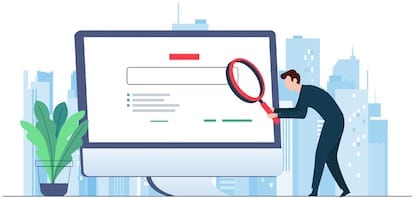Why is Hearing so important for Organisations?
This section is for any organisation, be it a charity, business, service, retail outlet, professional body, sports club or a social club who wants to be seen and heard.
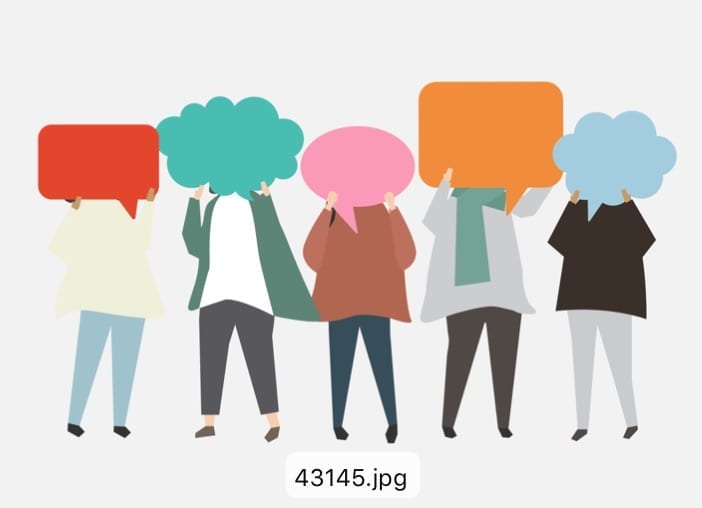 If you are a member, owner or employee of any organisation, you will know that you can’t achieve your goals without communicating with your stakeholders; your bosses, your colleagues, your clients and any other person who has a direct or indirect interest in you and your enterprise. Sometimes your communications will be via the written word, such as pamphlets, letters, emails, social media and so on, but so often formal and informal communications are made by people talking together either in person, by phone or over the internet in virtual meetings.
If you are a member, owner or employee of any organisation, you will know that you can’t achieve your goals without communicating with your stakeholders; your bosses, your colleagues, your clients and any other person who has a direct or indirect interest in you and your enterprise. Sometimes your communications will be via the written word, such as pamphlets, letters, emails, social media and so on, but so often formal and informal communications are made by people talking together either in person, by phone or over the internet in virtual meetings.

Everybody lipreads.
Nobody hears perfectly all of the time.
40% of people are distracted by background noise.

You too will feel calmer and less frustrated because people will understand you first time, and they will be more attentive because they no longer have guess about the things they have haven’t heard quite correctly.
 Poor lighting and background noise only serve to exacerbate hearing difficulties and Mumbli www.mumbli.online has much to say about how productivity and human connection can be improved through “an innovative, accessible approach to hearing wellness.”
Poor lighting and background noise only serve to exacerbate hearing difficulties and Mumbli www.mumbli.online has much to say about how productivity and human connection can be improved through “an innovative, accessible approach to hearing wellness.”
Have you noticed that we are all living in an increasingly noisy world? Step into any office, medical centre, education facility, sports venue or social grouping and stop and listen to the sounds around you.
Do you need to strain your voice to be heard?



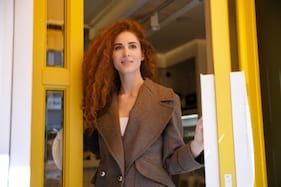 You won’t be surprised that studies conducted by the hearing charities have discovered that a staggering number of people leave cafes, pubs and restaurants earlier than they wanted because of high noise levels. It is not just when they are dining out the that people are voting with their feet, as one very famous lady described to Pipedown pipedown.org.uk
You won’t be surprised that studies conducted by the hearing charities have discovered that a staggering number of people leave cafes, pubs and restaurants earlier than they wanted because of high noise levels. It is not just when they are dining out the that people are voting with their feet, as one very famous lady described to Pipedown pipedown.org.uk
“I have left shops, unable to purchase the object of my desire, because of hellish piped music.”
– Joanna Lumley
When your organisation fully engages with hearing well, you will find that everybody, regardless of their hearing ability will benefit.
Can you tell if someone might have hearing loss?
Hearing Ambassadors look at hearing ability from a different perspective.
No one hears everything correctly first time. Moreover, we think that every business, charity or other organisation should appreciate the following thought –
If your message is important enough for you to want to say it then you need to take steps to ensure that what you are saying can be heard.
To paraphrase Mumbli,
It’s our world. Our sound.
Being Seen and Heard
The basics
If you have ever felt frustrated by a TV broadcast where the words are out of sync with the lips, you will appreciate that everybody lipreads. People with a hearing difficulty will perfect this skill without even noticing.
 When you focus on hearing well, you will see that someone who is struggling to hear will look at your whole face when listening to you. They will interpret what you are saying by reading your lips and following your gestures. When they can’t piece the whole picture together, they will make their best guess from the context that they have heard.
When you focus on hearing well, you will see that someone who is struggling to hear will look at your whole face when listening to you. They will interpret what you are saying by reading your lips and following your gestures. When they can’t piece the whole picture together, they will make their best guess from the context that they have heard.
Sometimes, if they have not understood correctly, they might look at bit confused, or make a remark that seems to be out of context. Sometimes they might even appear to be rude. They may talk over people or interrupt them because they didn’t know they were speaking, or seem to ignore someone because they simply didn’t hear them.
There are lots of things that you can do to help everyone hear you better. These range from making sure the other person can see your face to turning off any background noise and being prepared to repeat things or say things in a different way. See our Ideas for you as a Hearing Ambassador on our Downloadables page for more information on what you can do to be better understood.
Meetings
Most of our interactions with others take place through informal or formal meetings which could be in the form of
One to ones
Small groups
Large groups
Big Meetings and Conferences
Whilst every meeting is unique, there are a number of common elements that apply to all.
Once you are hearing aware you will be equipped with techniques that will help you to improve conversations.
For any meeting
The ergonomics and acoustics of meeting rooms are so often overlooked but good lighting and room layout of the room can make a huge difference to how well people hear and understand you.
- A room that is well lit, but not too bright with soft furnishings – carpets, cushions, curtains and even pot plants will be more comfortable for everyone than one with hard surfaces.
- Background noise such as air conditioning units, fans, piped music can be distracting and make listening much more challenging.
- It is impossible for anyone to follow a conversation if several people are talking at the same time.
- To aid concentration, breaks should be scheduled into long meetings.
One to One
Most of your interactions with others take place in the form of you talking to one other person; or in the jargon, as one to one meetings. In this context, we think of a trip to a retail outlet, an appointment with a professional advisor, or any chat with another person as a one to one meeting.
Below are ideas for good practices for you to try out in your formal or informal one to one’s. We have highlighted some of the things that are working well in each instance.
Take a look at each situation in turn. What do you think works well in each image ? Could any improvements be made?
Situations
Below are some situations and environments. We have added some comments about each of them which reflect some positives and negatives. Considering these images and comments, is there anything that you could now do differently the next time you meet with someone who you know doesn’t hear so well?

![]() The advisor here is making sure that the other person can see their face and lips. He is not looking down at his computer. He has also provided some supporting documentation.
The advisor here is making sure that the other person can see their face and lips. He is not looking down at his computer. He has also provided some supporting documentation.
The light source is behind the clients, making it easier to lip read.

![]() There is lots of facial contact which is good.
There is lots of facial contact which is good.
An improvement could be made if the receptionist were to stand up. This would likely make it easier to lipread and follow facial gestures.

![]() This cafe is well lit and has some curtains and soft furnishings and plants. These will all help to absorb sound and reduce reverberance. The sofa under the window might be a good place to sit and chat if it is not too busy.
This cafe is well lit and has some curtains and soft furnishings and plants. These will all help to absorb sound and reduce reverberance. The sofa under the window might be a good place to sit and chat if it is not too busy.

![]() The example here shows a good small meeting. Although it looks to be an open plan area, there don’t appear to be any distractions going on behind the group. The workspace seems to be well lit, and everyone in this meeting can see all the others. The soft furnishings will help to absorb any unwanted noises.
The example here shows a good small meeting. Although it looks to be an open plan area, there don’t appear to be any distractions going on behind the group. The workspace seems to be well lit, and everyone in this meeting can see all the others. The soft furnishings will help to absorb any unwanted noises.
 When the group gets to more than about 10 people, it may be difficult for everyone to sit facing the others, especially if the room is arranged as a board room, class room or individual tables.
When the group gets to more than about 10 people, it may be difficult for everyone to sit facing the others, especially if the room is arranged as a board room, class room or individual tables.Large meetings will require more formality than their smaller counterparts, but with a few adjustments, it will be possible to overcome any issues that arise due to the configuration of the room.

![]()
The speaker is standing when addressing the meeting attendees.

![]()
The speaker is positioned in front of a bright window. This makes it difficult for the audience to clearly see their face in order to lipread. The speaker is also talking to the flip chart rather than the audience.
Lighting should be good enough for the audience to be able to lip read but should not be too bright for any presentation or video.If you need to use a projector in day light it should be at least 3500 lumens.

![]()
The room is well lit and the presenter is facing the light source. This will mean that everyone will be able to see his facial gestures and lip movements.
The presenter is not using a microphone, but he is standing to address his audience. This will give him the best chance of projecting his voice.
If anyone in the audience wishes to raise a question or make a comment, it is unlikely that everyone will be able to hear them, so the presenter should repeat what has been said, before going on to answer for the benefit of the whole meeting.
 For big meetings of say 20 or more people, the speakers should not rely on trying to speak loudly. They should use their normal voice with some form of voice enhancement, otherwise they risk straining their vocal cords, and what is worse, what they say will be missed by many in the audience.
For big meetings of say 20 or more people, the speakers should not rely on trying to speak loudly. They should use their normal voice with some form of voice enhancement, otherwise they risk straining their vocal cords, and what is worse, what they say will be missed by many in the audience.Your main presenter should be encouraged to use a microphone. You should always run a sound check before the meeting starts so you can be sure that the speaker is comfortable with using the microphone, it is working correctly and sound system is positioned correctly.

If the venue cannot provide you with a microphone and amplifier and your group meets regularly, you could buy a portable system for under £300. It might be possible to share the cost with the venue or other groups which use the same room. Or of course you could use a different venue !
Until you get used to them, using a microphone might seem a bit daunting. The main types are held in the hand, or on a 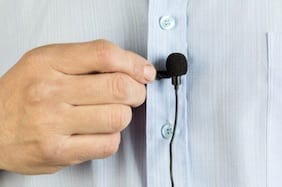 stand (hand-held), pinned to the lapel (lavalier) or as a head set with mouth piece.
stand (hand-held), pinned to the lapel (lavalier) or as a head set with mouth piece.
If you have a portable microphone, you will also need to wear a small receiver unit in a back pocket.
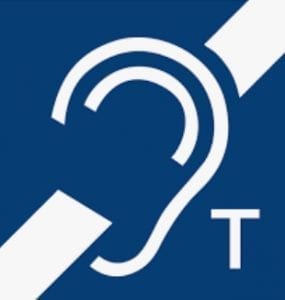 Some venues will have an induction or infrared loop system installed.
Some venues will have an induction or infrared loop system installed.
This helps a hearing aid wearer by sending speech directly to hearing aids. Before your meeting starts, it is worth while checking if the venue has a loop system and whether it is switched on. The venue should also be able to tell you where is the best place for hearing aid wearers so that they get maximum benefit from the loop system, and also where the system microphones are situated. The loop system won’t help those who don’t wear hearing aids; you will need to provide on other voice amplification techniques for them.
*See the downloadable brochure in Resources for more information about assistive technology and how to use the Hearing (Induction) Loop for both hearing aid wearers and frontline teams.
 During the Coronavirus pandemic, many people need to wear personal protective equipment such as face masks which cover the nose and mouth, but in doing so they make lipreading impossible, and speech muffled.
During the Coronavirus pandemic, many people need to wear personal protective equipment such as face masks which cover the nose and mouth, but in doing so they make lipreading impossible, and speech muffled.
There are some solutions to this problem.
![]() Wear a face shield or a face mask with a perspex insert which still conforms with the regulations, but makes lip reading possible
Wear a face shield or a face mask with a perspex insert which still conforms with the regulations, but makes lip reading possible
![]()
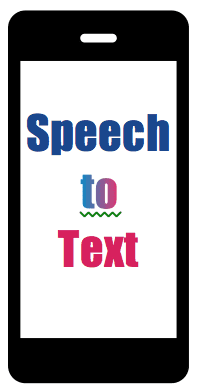 Use a computer, smart phone or tablet to convert your speech to text. This technology uses dictionaries held on the internet to translate speech into written words. Many are free to install and use, but some require you to take out a subscription service.
Use a computer, smart phone or tablet to convert your speech to text. This technology uses dictionaries held on the internet to translate speech into written words. Many are free to install and use, but some require you to take out a subscription service.
![]()
Google Live Transcribe is free for android users.
![]() Otter.ai currently provides a free service for occasional users and a subscription service for business. It also provides a full transcript of the meeting which can be printed or shared with other Otter.ai users.
Otter.ai currently provides a free service for occasional users and a subscription service for business. It also provides a full transcript of the meeting which can be printed or shared with other Otter.ai users.
There are many other great products from software developers. The technology is changing so quickly that it is best to search the internet for ‘Speech to Text Converters’to find something that is the most suitable for your individual needs.
 You might think it would be too difficult to contact someone who is hard of hearing over the telephone, but if you use plain language and don’t waffle, it will be much easier for people to understand you, regardless of their hearing ability.
You might think it would be too difficult to contact someone who is hard of hearing over the telephone, but if you use plain language and don’t waffle, it will be much easier for people to understand you, regardless of their hearing ability.Relay UK, previously known as NGTS (Next Generation Text Service), is a BT service which is Ofcom approved. The text relay service connects you to the other person via a person known as a relay assistant. Relay UK is used for people who find it difficult to hear or speak. Calls are charged at the normal rate and there is no charge for using the relay service. To contact a person using the service prefix their number with 18002, but remember that the other person must have the service available to them on their telephone, computer, smart phone or tablet to be able to use it.
To discover more about the Relay UK service, please click here.
There are also many apps which the person at the other end can use on a personal computer, smart phone or tablet to convert your speech to text at their end such as Otter.ai, Dictate, Rogervoice, etc.
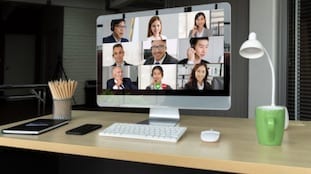 Video conferencing is being used extensively for social and business purposes, especially during the pandemic. A video conference has the advantage over a telephone call in that both sides can see one another.
Video conferencing is being used extensively for social and business purposes, especially during the pandemic. A video conference has the advantage over a telephone call in that both sides can see one another.Before you start your conference call, check that your face is well lit and the other people on the call can see your lips and facial gestures.

Top Tip for Organisations
Purple is an organisation which brings disabled people and businesses together for their mutual benefit. To find out more about how they are changing the conversation from disability to opportunity and benefit, take a look wearepurple.org.uk
Some people will wear a badge or lanyard to indicate they need a little extra time or extra help from you. A good example is the sunflower used by Hidden Disabilities.
See hiddendisabilitiesstore.com to find out how the sunflower scheme works.
In other sections of this website, you can learn about
More information
There are several national organisations which are free to use and provide advice about living well with hearing loss and tinnitus, whatever your age. The major ones are:
National Health Service www.nhs.uk
RNID https://rnid.org.uk
Hearing Link www.hearinglink.org
British Tinnitus Association www.tinnitus.org.uk
Our Resources section has a wealth of information for you, your friends/family and your organisation. We include charities, support groups, classes, campaigning organisations, recycling and much more.
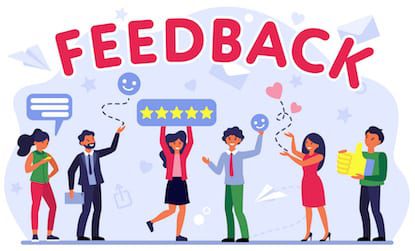
We welcome your feedback on this page!
What do you like ?
What else would you like to see ?
What improvements can we make ?
Please let us know by contacting us.

